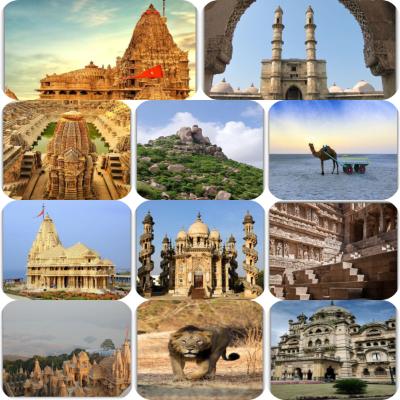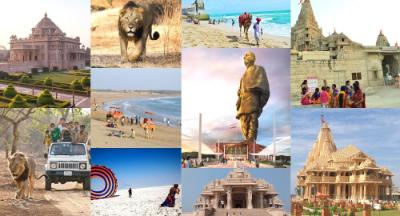Gujarat’s Smart Tourism Trails: How AI and AR Are Enhancing Heritage Travel in 2025
Gujarat, a vibrant state in western India known for its rich heritage and diverse culture, has always been a popular destination for tourists seeking a glimpse into the country's history. In 2025, Gujarat is taking its tourism to the next level with the introduction of Smart Tourism Trails that leverage Artificial Intelligence (AI) and Augmented Reality (AR) technologies to offer visitors a unique and immersive experience.
The Rise of Smart Tourism Trails
Imagine exploring the ancient city of Dwarka or the majestic Rani Ki Vav stepwell in Patan with a personal tour guide in the form of an app on your smartphone. The Smart Tourism Trails initiative in Gujarat aims to enhance visitors’ experiences by providing curated content, interactive maps, and real-time information at various heritage sites across the state.
How AI is Revolutionizing Heritage Travel
Artificial Intelligence plays a crucial role in the Smart Tourism Trails by analyzing data and predicting visitor preferences to offer personalized recommendations. AI-powered chatbots are available to assist tourists with queries, suggest nearby attractions, and provide historical insights about the sites they are visiting.
Furthermore, AI algorithms help in crowd management by predicting peak hours at popular tourist spots and offering alternative routes to avoid overcrowding. This not only enhances the visitor experience but also ensures the safety and security of tourists.
Augmented Reality: Bringing Heritage Sites to Life
Augmented Reality technology enriches the heritage travel experience by superimposing digital information onto the physical world. Visitors can use AR-equipped devices or smartphones to view 3D reconstructions of historical structures, virtual guides explaining the significance of each monument, and immersive storytelling experiences.
At the UNESCO World Heritage site of Champaner-Pavagadh, tourists can witness the ancient citadel come to life through AR animations that showcase its former glory. Similarly, at the Sabarmati Ashram in Ahmedabad, visitors can interact with virtual avatars of Mahatma Gandhi and learn about the freedom struggle in an engaging and interactive manner.
The Future of Heritage Travel
The integration of AI and AR technologies in Gujarat’s Smart Tourism Trails is revolutionizing the way people experience and engage with heritage sites. By making historical information more accessible, interactive, and engaging, these initiatives are not only attracting more visitors but also preserving the cultural heritage of the state for future generations to appreciate.
As we look towards the future of travel in Gujarat and beyond, it is evident that AI and AR will continue to play a significant role in enhancing the overall tourism experience. Whether you are a history enthusiast, a tech-savvy traveler, or simply looking to explore the cultural treasures of India, Gujarat’s Smart Tourism Trails offer a glimpse into the future of heritage travel.
Share Your Smart Tourism Experience
Have you had the opportunity to explore Gujarat’s Smart Tourism Trails? Share your experiences and recommendations with us in the comments below. Don’t forget to spread the word and share this post with your fellow travel enthusiasts to inspire them to embark on their own AI and AR-enhanced heritage travel adventures!
Disclaimer : The information provided in this blog is for general informational purposes only. While we strive to keep the content accurate and updated, TravelSetu assumes no liability for errors or omissions. If you believe any part of this blog infringes your rights or causes concern, please notify us immediately at info[at]travelsetu[dot]com so that appropriate action can be taken.





